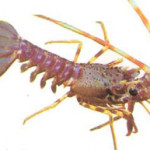
The marine habitats in which marine communities live are many and varied and are created, or caused, by a number of physical factors. These factors combine to determine which animal and plant communities can co-exist within a particular habitat, with the interplay of the communities themselves playing a large determining factor.
The physical factors include elements such as temperature, depth, tides and currents, relative salinity, wave action, light or shade, sea-bottom substrate, aspect and inclination. Extreme physical factors, such as a rise in sea temperature can have a significant and sudden impact on habitats, such as the El Nino effect on the coral reefs in the Maldives, where a small rise in sea temperature caused widespread coral bleaching.
In addition to the physical factors, the resident marine life makes a significant impact on the habitat. These living (or biotic) factors include the extent to which animals and plants compete or co-operate with each other.
For example, sea urchins graze a shallow band below the worst wave action and in so doing displace both the shallow seaweeds above and the stalked kelp below. This has a secondary effect in that it also clears the way for other grazers such as snails and limpets. The stalked kelp, in turn, pens the urchins in their zone, preventing them from straying, thereby ensuring that the habitat is suitably grazed.
As organisms compete for a place, either by grazing or predation, over many years -indeed many thousands of years – the interdependent communities evolve into a unit where one organism can no longer be viewed independently from the whole. That is a habitat.
Between the shallow bladder kelp zone and the kelp forest, there usually extends a barren zone where sea urchins (echinoderms) and other grazing organisms keep a large area of rock free from algae. These rock barren habitats are also known as sea urchin habitats, the urchin zone, urchin flats, urchin barrens or grazed flats.
These barren habitats are also created by grazers such as the paua (Haliotis iris) or the Cooks turban shell (Cookia sulcata), where sea urchins are absent. Overfishing of sea urchins can lead to a depletion of these habitats.
When recording the presence of these habitats, please estimate the total area, noting the depth and presence of any other marine life.








Social Profiles